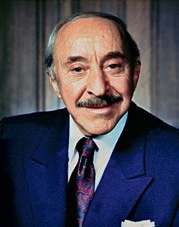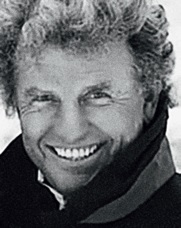 Our Founder, Mr. Marc Cavotti
Our Founder, Mr. Marc Cavotti
Marc Cavotti’s parents Rosalia and Angelo emigrated to Canada from Cavotto, Italy and settled in Toronto in the College Street area. Angelo became involved in the construction industry and eventually founded Leaside Construction - a sewer and road construction business. The Cavottis had five children; Marc, Dante, Ugene, Violet and Mafalda.
Three of the children became active in the family business. The family had an early introduction to Etobicoke when they spent their summers in the 1920s and ’30s at their “cottage” located at the southern end of Long Branch Avenue. The grand old home is still there. Leaside Construction grew with Marc at the helm, and he eventually became involved in residential construction.
“I wanted to purchase a piece of land close to Metropolitan Toronto which could be developed into a modern residential community,” said Mr. Cavotti. “The problem was to find land, which was suitable. My associates and I examined many locations before we heard that the Silverthorn farm was for sale. As soon as I saw it I knew that I wanted it. Here was a property, which was ideally situated close to the main arteries leading into the heart of Toronto.
What really impressed me about the farm was the abundance of trees and brooks or rivers. When my associates saw the farm they were almost as impressed as I was. We finally decided to buy the farm. My associates, at first, jokingly referred to the land as ‘Mark’s land’ and then, after the purchase was completed, they did me the honour of calling the area “Markland Wood.”
After being in the Silverthorn family for 148 years, the Mill Farm was sold to Mark Cavotti and Associates in July of 1958. The 400 acres from Dundas Street to Burnhamthorpe Road that ran along the edge of the Etobicoke Creek sold
for $3,000,000 (slightly more than $7,000 per acre). The Silverthorn family explained Newman’s feelings about his concerns about retaining the trees on the property, and Mr. Cavotti promised to preserve the trees wherever possible. “I love trees,” he said at the time of the major purchase. “I’ll make sure that we will spare every tree we can and see that every house lot has a few on it.” To preserve the area’s natural beauty, Mr. Cavotti asked potential homeowners to sign a contract that they would preserve any trees on their property.
Marc and his brother Dante were avid golfers and knew Al Balding. It was Balding who suggested that the area of 100 acres bounding the Etobicoke Creek would be a perfect location for a golf course. Marc appointed Al Balding the first Club Professional in 1964. Until his death in 1999 at the age of 82, Marc was an avid supporter of the golf club in numerous ways and was a primary contributor to the development of our Junior Golf Program.
 Our Designer, Mr. Eric Hanson
Our Designer, Mr. Eric Hanson
“Markland Wood,” said Eric Hanson, “presented the type of challenge which every planner dreams of. Here was a parcel of land, bounded on three sides by natural boundaries: on the south and west by the Etobicoke River and on the east by the Renforth Creek.”
Eric graduated from the University of Toronto with a B.A.Sc. and moved on to graduate studies in Town and Country Planning. He was an accomplished amateur golfer. Hanson played on Canada’s International Team for several seasons, placed second in the Canadian Amateur Championship in 1955, qualified for the U.S. Amateur six times, played in the Canadian Open many times and once in the Senior British Open at Turnberry, Scotland. His golf travels took him across Canada, the U.S. and Europe with all the courses he visited or played helping influence his design of Markland and other golf courses in Canada.
According to Eric, Marc Cavotti “never took his eye off the golf course,” even while overseeing the development of the residential phase of Markland Wood. Construction of the course began quite early relative to the construction of the houses and this permitted making good use of heavy equipment needed to clear the way for roads. Excess topsoil scraped away to dig basements only needed to be moved a short distance to the creek valley. This topsoil was key to the design of the course as the creek valley bottom was largely shale and clay.
Mr. Cavotti was very supportive of doing things in new ways. For example, Markland was the first golf course in Canada to use bent grass from tee to green. The traditional way of seeding golf courses at the time involved planting a “buffet” of grasses such as Kentucky Blue grass and fescue. Because of the bent grass on the tees, it was possible to cut them almost as close as the greens. As a result, in the first years of the club, each tee had a practice putting hole. Flood prevention was a big challenge, and to deal with this Eric raised the level of the tees and greens approximately six feet above the floodplain. This was to prevent silt/sediment from the creek being deposited on the greens in the event of serious flooding.
Eric Hanson died on September 1st, 2007.